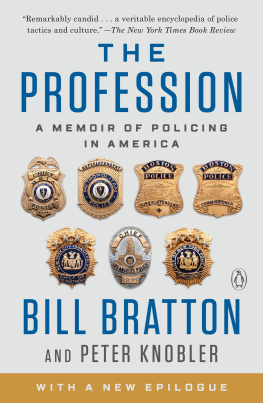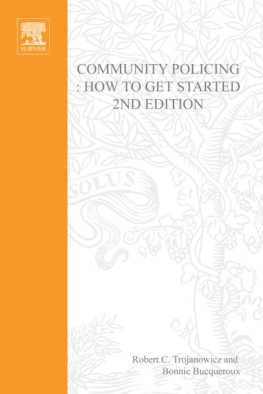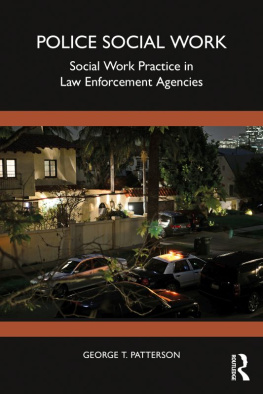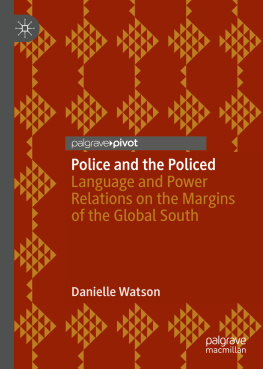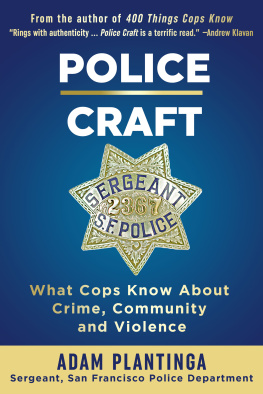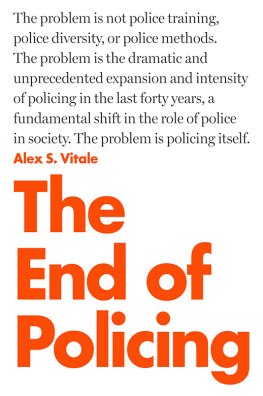Community Policing
This textbook discusses the role of community-oriented policing, including the police image, public expectations, ethics in law enforcement, community wellness, civilian review boards, and what the community can do to help decrease crime rates. In addition, the author covers basic interpersonal skills and how these might vary according to the race, sex, age, and socioeconomic group with which the officer is interacting. Finally, students learn how to initiate new programs in a community, from the planning process and community involvement to dealing with management and evaluating program success.
Michael J. Palmiotto, Ph.D. is Professor of Criminal Justice at Wichita State University. He is a former police officer in New York State and has experience in establishing and operating a Police Training facility. He has a masters degree from John Jay College (CUNY) and a doctorate from the University of Pittsburgh. Professor Palmiotto has published ten books and numerous articles and book chapters in the criminal justice field.
Criminology and Justice Studies Series
Edited by Chester BrittNortheastern University, Shaun L. Gabbidon, Penn State Harrisburg and Nancy Rodriguez, Arizona State University
Criminology and Justice Studies offers works that make both intellectual and stylistic innovations in the study of crime and criminal justice. The goal of the series is to publish works that model the best scholarship and thinking in the criminology and criminal justice field today, but in a style that connects that scholarship to a wider audience including advanced undergraduates, graduate students, and the general public. The works in this series help fill the gap between academic monographs and encyclopedic textbooks by making innovative scholarship accessible to a large audience without the superficiality of many texts.
Books in the Series
Published:
Biosocial Criminology: New Directions in Theory and Research edited by Anthony Walsh and Kevin M. Beaver
Community Policing in America by Jeremy M. Wilson
Criminal Justice Theory: Explaining the Nature and Behavior of Criminal Justice edited by David E. Duffee and Edward R. Maguire
Lifers: Seeking Redemption in Prison by John Irwin
Race, Law and American Society: 1607 to Present by Gloria J. Browne-Marshall
Todays White Collar Crime by Hank J. Brightman
White Collar Crime: An Opportunity Perspective by Michael Benson and Sally Simpson
The New Criminal Justice: American Communities and the Changing World of Crime Control by John Klofas, Natalie Hipple, and Edmund McGarrell
The Policing of Terrorism: Organizational and Global Perspectives by Mathieu Deflem
Criminological Perspectives in Race and Crime, 2/e by Shaun Gabbidon
Corrections by Jeanne Stinchcomb
Forthcoming:
Crime and the Lifecourse by Michael Benson
Structural Equations Modeling for Criminology and Criminal Justice by George Higgins
Crime Emergence: Reducing Uncertainty in Theory and Research by Christopher Sullivan, Jean McGloin, and Les Kennedy
Criminal Justice Research by Brian Withrow
Experiencing Criminal Justice: Practitioners and Outsiders Perspectives of Policing, Courts, and Corrections edited by Heith Copes and Mark Pogrebin
Program Evaluation for Criminal and Juvenile Justice by J. Mitchell Miller and Holly Ventura Miller
Race, Racism, and Crime: A Theory of African American Offending by James Unnever and Shaun Gabbidon
Causes of Delinquency Revisited by Chester Britt and Barbara Costello
First published 2011
by Routledge
270 Madison Avenue, New York, NY 10016
Simultaneously published in the UK
by Routledge
2 Park Square, Milton Park, Abingdon, Oxon OX14 4RN
Routledge is an imprint of the Taylor & Francis Group, an informa business
2011 Taylor & Francis
The right of Michael J. Palmiotto to be identified as author of this work has been asserted by him in accordance with sections 77 and 78 of the Copyright, Designs and Patents Act 1988.
Typeset in Adobe Caslon, Trade Gothic and Copperplate Gothic by Florence Production Ltd, Stoodleigh, Devon
Printed and bound in the United States of America on acid-free paper by Walsworth Publishing Company, Marceline, MO
All rights reserved. No part of this book may be reprinted or reproduced or utilised in any form or by any electronic, mechanical, or other means, now known or hereafter invented, including photocopying and recording, or in any information storage or retrieval system, without permission in writing from the publishers.
Trademark Notice: Product or corporate names may be trademarks or registered trademarks, and are used only for identification and explanation without intent to infringe.
Library of Congress Cataloging in Publication Data
Palmiotto, Michael.
Community policing: a police-citizen partnership/Michael J. Palmiotto.
p. cm.(Criminology and justice studies series)
Includes bibliographical references and index.
1. Community policingUnited States. 2. Policecommunity relations. 3. Crime preventionCitizen participation. 4. Police administration. I. Title.
HV7936.C83P353 2011
363.23 dc22
2010034849
ISBN13: 978-0-415-88974-2 (hbk)
ISBN13: 978-0-415-88975-9 (pbk)
ISBN13: 978-0-203-83050-5 (ebk)
SERIES FOREWORD
Criminology and Justice Studies offers works that make both intellectual and stylistic innovations in the study of crime and criminal justice. The goal of the series is to publish works that model the best scholarship and thinking in the field today, but in a style that connects that scholarship to a wider audience including advanced undergraduates and graduate students. The works in the series help fill the gap between academic monographs and encyclopedic textbooks by making innovative scholarship accessible to a large audience without the superficiality of many texts.
Professor Palmiottos Community Policing: A PoliceCitizen Partnership provides a comprehensive overview of community policing. Beginning with a detailed history of policing, the author provides readers with an introduction to several aspects of policing that were critical considerations with the move toward the large-scale adoption of community policing (e.g., police culture, police discretion, etc.). The author also provides essen tial discussions on neighborhoods, multiculturalism, and crime prevention. Each of these topics provides students of community policing with additional insights into this policing philosophy and also the advances in policing that led to the formal development of the strategy. The use of concrete examples from an assortment of police agencies represents a hallmark of the book. Thus, after reading Professor Palmiottos book, students of community policing will have a clear understanding of the challenges and processes that are required to implement and sustain the strategy.
Shaun L. Gabbidon


